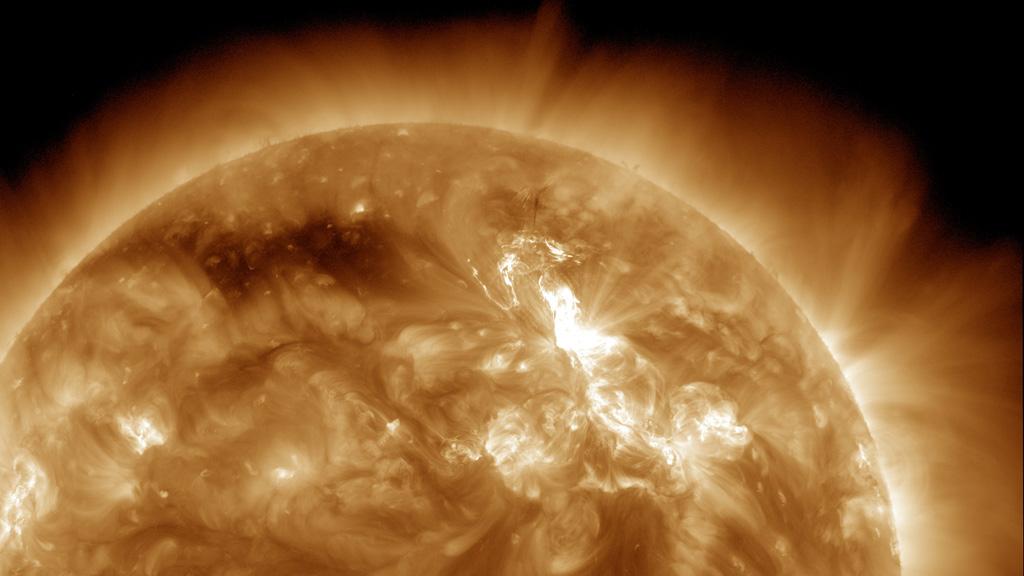Biggest Solar Storm Since 2005
The sun erupted late on January 22, 2012 with an M8.7 class flare, an earth-directed coronal mass ejection (CME), and a burst of fast moving, highly energetic protons known as a "solar energetic particle" event. The latter has caused the strongest solar radiation storm since September 2005 according to NOAA's Space Weather Prediction Center.
Solar Dynamics Observatory captured the flare, shown here in teal as that is the color typically used to show light in the 131 angstrom wavelength, a wavelength in which it is easy to view solar flares. The flare began at 10:38 PM ET on Jan. 22, peaked at 10:59 PM and ended at 11:34 PM.
Credit: NASA/SDO/AIA
The Solar Heliospheric Observatory captured the coronal mass ejection (CME) in this video (which shows the sun's activity from January 19 to January 23). The end of the movie shows the interference caused by the onslaught of fast, energetic solar particles emitted from the sun.
Credit: SOHO/ESA & NASA
SOHO view of M9 flare.
Credit: SOHO/ESA & NASA

Solar Dynamics Observatory captured the flare, shown here in bronze as that is the color typically used to show light in the 193 angstrom wavelength. The flare began at 10:38 PM ET on Jan. 22, peaked at 10:59 PM and ended at 11:34 PM.
Credit: NASA/SDO/AIA

Solar Dynamics Observatory captured the flare, shown here in teal as that is the color typically used to show light in the 131 angstrom wavelength. The flare began at 10:38 PM ET on Jan. 22, peaked at 10:59 PM and ended at 11:34 PM.
Credit: NASA/SDO/AIA
Solar Dynamics Observatory captured the flare, shown here in red/orange as that is the color typically used to show light in the 304 angstrom wavelength. The flare began at 10:38 PM ET on Jan. 22, peaked at 10:59 PM and ended at 11:34 PM.
Credit: NASA/SDO/AIA
Interview with Antti Pulkkinen, NASA Solar Scientist. What makes this event different from other recent CMEs and flares?
For complete transcript, click here.
Interview with Antti Pulkkinen, NASA Solar Scientist. The three stages of this event.
For complete transcript, click here.
Interview with Antti Pulkkinen, NASA Solar Scientist. How will this event affect the Earth?
For complete transcript, click here.
Interview with Antti Pulkkinen, NASA Solar Scientist. Will we see more events like this one in the future?
For complete transcript, click here.
Credits
Please give credit for this item to:
NASA/Goddard Space Flight Center
-
Video editor
- Scott Wiessinger (USRA)
-
Interviewee
- Antti Pulkinnen (NASA/GSFC)
-
Producers
- Scott Wiessinger (USRA)
- Genna Duberstein (USRA)
-
Project support
- Swarupa Nune (Vantage)
- Stuart A. Snodgrass (HTSI)
- Rich Melnick (HTSI)
- Pat Kennedy (HTSI)
-
Videographer
- Rob Andreoli (Advocates in Manpower Management, Inc.)
-
Writer
- Karen Fox (ADNET Systems, Inc.)
Release date
This page was originally published on Tuesday, January 24, 2012.
This page was last updated on Wednesday, May 3, 2023 at 1:53 PM EDT.
